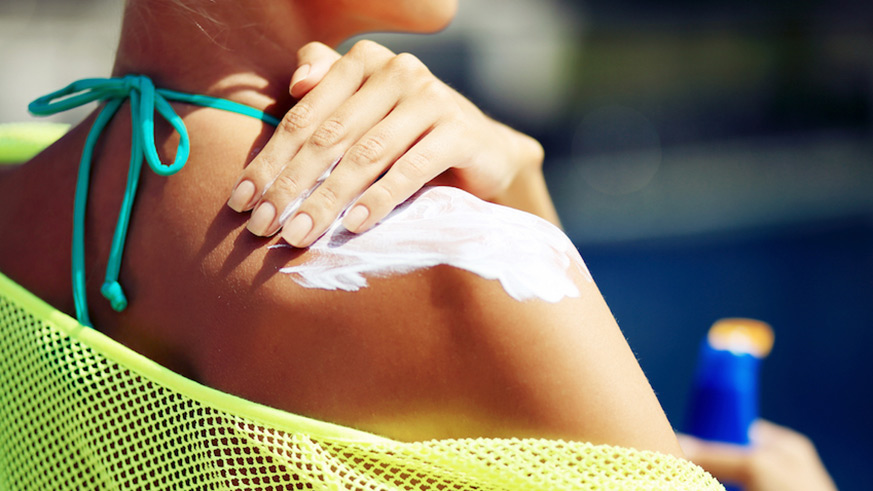Sun’s out; time to slather on the sunscreen. But which one? We know sunscreen is essential to protecting against skin cancer, but with so many on the market and so much conflicting information out there —for example, when Consumer Reports and the Environmental Working Group (EWG) both put out their annual lists of the best sunscreens, the lists varied drastically — how do you pick the right one for you?
The questions don’t stop there. How often should you apply sunscreen? What does “broad spectrum” mean? To better make sense of the terms and discuss best options, we spoke with dermatologist Dr. Kally Papantoniou, who helped us break it down, so you can enjoy your summer in the sun without stressing too much about your health.
Should you use mineral or chemical-based sunscreens?
Both types of sunscreen are equally effective, but use different technology to protect your skin. Mineral-based sunscreens use zinc oxide and/or titanium dioxide to physically block ultraviolet (UV) rays, while chemical-based sunscreens use active ingredients, such as oxybenzone and avobenzone, that absorb the rays, break them down, and convert them into heat.
Oxybenzone, in particular, is a controversial ingredient because a study in which it was fed to rats showed it to be a hormone disruptor. However, no evidence suggests that it’s a risk to humans, and the American Academy of Dermatology (AAD) and the Skin Cancer Foundation both approve its use. “There’s no data that shows that it does anything in people,” explains Papantoniou. “The chemicals in high doses can have an effect on your endocrine system, but they’re such small amounts [in sunscreen] that we’re not seeing that happen in people.”
In the past, folks have opted out of mineral-based sunscreen because it would leave a thick, chalky white residue on your face (think: white-nosed lifeguard ). But that’s no longer the case, now that the products contain micronized zinc, which are smaller particles with less visibility.
If you have sensitive skin, mineral is a better choice than chemical. “When they break down, sometimes the chemicals can be irritating or a cause for allergy,” explains Papantoniou. If you’re worried about acne, make sure the label reads “non-comedogenic.”
Which number SPF is best?
The AAD recommends the use of SPF 30 or higher.
Papantoniou echoes this for daily use, but suggests if you’re going to be outside in direct sunlight, opt for SPF 50 — especially if you have a skin condition like malasma (skin discoloration) or have previously had skin cancer.
“Anything above 50 becomes equivocal,” she notes. “There’s such minute differences, between, say, SPF 50 and 100.”
Make sure what you’re using says “broad spectrum” on the label, indicating the sunscreen will protect against both UVA and UVB rays.
How often should you apply sunscreen?
Apply sunscreen daily. If you’re just going to work and you won’t be outside, once in the morning is fine, Papantoniou says. (If you’re going to take a lunch break and sit out in the sun, it’s a good idea to reapply first.)
But, if you’re going to be outside and active, especially sweating or in the water, you should reapply every 90 minutes. “Sunscreen is water resistant, not waterproof,” she says. “If you go swimming or sweat, you need to reapply.”
Seek extra protection
Sunscreen is not the be-all, end-all for sun protection. You should also be wearing hats, staying inside on particularly hot days, or, at least, ducking into the shade when you can. “Sunscreen will help prevent you for getting a burn, that’s what that SPF factor is,” she explains. “It doesn’t mean it blocks off all the light from passing through and stimulating your skin.”
Also: Even if your makeup or concealor says SPF on it, you still need to use a moisturizer underneath. “Unless you’re going to work looking like a clown [wearing] a thick layer of makeup, it’s not enough.”



















